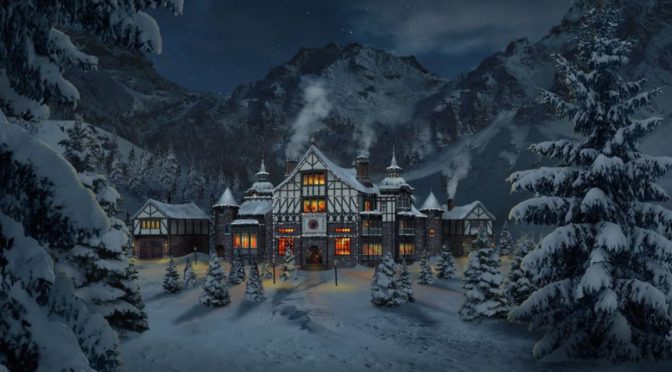Drawing inspiration from many sources, be they cultural or even corporate, the figure known today as Santa Claus is a mercurial figure that changes for almost every region he’s in. His clothes, his figure, his behavior, and even his name change from one region to another. He’s associated now with names like Father Christmas, Kris Kringle, and of course Santa Claus. But regardless of what influences he may have mixed with over time, the figure started long ago with a man named Saint Nicholas.
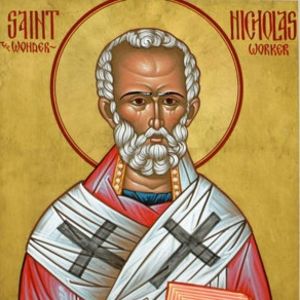
Living in the city of Myra in the 4th century AD, in what is now Turkey, Saint Nicholas is the root of many of the stories and traditions that dominate the Christmas season.Having been associated with stories of great generosity and a penchant for secret gift giving, Nicholas was a natural fit for the gift giving season. And, as a Saint, he was also an acceptable figure to associate with the Christian holiday (even if it was originally a pagan holiday instead). However, one question presents itself:
How does the Bishop of Myra, far from the Arctic circle, end up on the North Pole of all places?
Northward Bound

Despite his association with the cold north today, the figure of Saint Nicholas was originally not associated with any specific location. In the earliest days he was, like all saints, essentially a disembodied spirit that performed miraculous acts from beyond the grave. This figure, as such, was generally thought to be essentially “everywhere” and yet nowhere. Gift giving in these earliest days was either not a common occurrence, was a personal affair, or was attributed to other figures such as the Christkind (a cherub-like figure in Europe which became the origin of the name “Kris Kringle”). And Saint Nicholas’ association with the season was both through his feast day (observed in early December) and the generosity he was known for while alive.
However this changed as the figure of Saint Nicholas became more heavily associated with the season and gained new names and attributes over time. Soon enough he was associated with gift giving, often traveling with an associate who would punish wicked children while he rewarded the good. Entities such as the Krampus, Belsnickel, and Zwarte Piet came to exist in this time as living entities and Saint Nick became more tangible alongside them. And as he became tangible he finally had a home again according to at least one story – one that was no where near the North Pole.
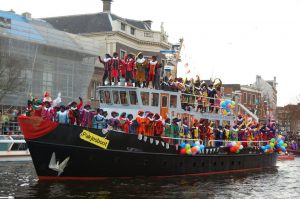
In the Netherlands, joined by a crew of Zwarte Piets, Sinterklaas arrives by steam boat in the early days of December. Originally this boat was to be used to not only bring gifts but also to take kidnapped children back to Sinterklaas’ shop for misbehaving. This was inspired in part by actual historical events in the region, but the result was that the boat was said to come from and return to one place in particular. Should these misbehaving children be kidnapped and loaded onto the boat, they’d soon find themselves in Sinterklaas’ home – Spain.
Though this tradition has changed and the Zwarte Piet has become a friendlier (if somewhat controversial) figure, them coming from Spain made sense at the time. Back in the day, these figures were associated with Moors from Spain and the history of Moorish pirates raiding coastal towns for centuries in the past. As such, Santa, traveling with these Moors, apparently came from the same place they did. Though the tradition has changed slightly over time (and is under pressure to change more due to the black makeup involved), the fact that Santa travels into the Netherlands from Spain hasn’t changed in all that time. In fact, no one really saw Santa as coming from the frozen north until the work of an artist named Thomas Nast.
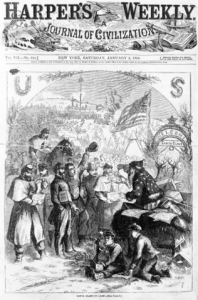
Nast was a prolific political cartoonist in the late 1800s and was responsible for creating several iconic figures in American culture. He was responsible for the elephant representing the Republican party, the donkey for the Democrats, and Uncle Sam just to name a few. But another thing he was a great influence on was forming much of the basis for our modern day Santa Claus. Though drawing a great deal of influence from the European depictions, Nast was responsible for contributing much of the details we now associate with Santa Claus – including his home in the North Pole.
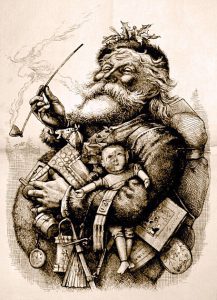
It was at this time that expeditions to reach the North Pole were being undertaken by explorers and no one had successfully reached the elusive place atop the world. Stories of an inaccessible place constantly covered in snow seemed to be the perfect location for Santa. The figure had long been associated with the winter months and the idea of a “white Christmas” was already quite popular. The North Pole, perpetually covered in snow, seemed like a place where it would always be Christmas and an elusive figure could be kept hidden for all this time. As such, Nast put him there, and the image stuck.
But not everyone agrees to put Santa in this neutral territory. Many countries with territory over the Arctic circle claim to be the true home of the jolly fat man. The Danes say that he lives in Greenland and that anyone who thinks differently is under a misunderstanding. After all, according to them, his warehouse is on the North Pole but his actual home is somewhat more south on Greenland. Meanwhile Finland claims him to be in a place called Lapland, where they have literal Santa Claus tours. Even the US and Canada get in on it, with one place in Alaska called “North Pole” capitalizing on it and Canada devoting one of their postal codes to Santa’s workshop – H0H 0H0.
But one of the more unique claims I’ve seen is the one made by the Norwegians town of Drøbak. Not satisfied to just claim he currently lives there, the people of Drøbak even say that Santa was actually born there – under a rock in “Vindfangerbukta”. Nevermind that a man named Saint Nicholas actually existed and lived in a place called Myra – someone that viking-like clearly came from Norway.
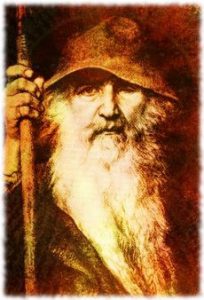
Whatever version of the story you believe in, the idea of Santa in the frozen north started with Nast – who likely never imagined people would start erecting small tourist traps dedicated to the figure just north of the Arctic circle. And, ironically, Saint Nicholas himself, though now forever associated with these quaint, snowy villages…
Probably would have frozen his ass off.
(I write novels and dabble in screenplays. I too live far from the arctic circle, so this Christmas you may find me on twitter talking about unseasonably warm weather.)


